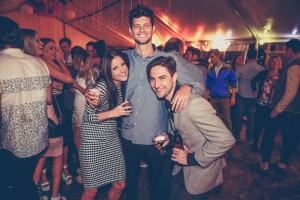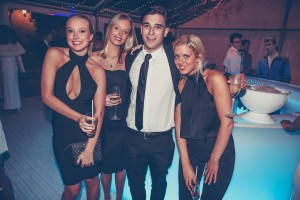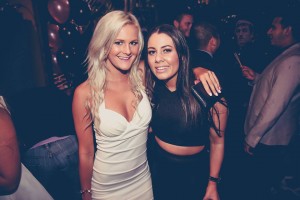I undertook my workplace attachment as a Social Media Assistant at the Fitzroy Football Club, during the second year of my Bachelor of Communications Degree. The opportunity was intended mainly for students interested in a career in sports marketing or communications, however I applied for the position as I have an interest in sports journalism, and with a passion for Australian Rules Football, sports journalism and broadcasting is a potential career path I would like to pursue in the near future, and the position Fitzroy Football Club were looking to fill seemed like a reasonable starting point.
The Fitzroy Football Club played in the VFL/AFL from 1897-1996, and together with the local side, the Fitzroy Reds (formerly University Reds) that played in the VAFA from 1955-2008, the club is once again known as the Fitzroy Football Club (Incorporating the Fitzroy Reds), donning Fitzroy’s old guernsey. Since the official merging of the two clubs, the team has amassed a large following of supporters, many of whom once cheered on “the Fitzroy of Old”. Their home games are played at the historic Brunswick St Oval where Fitzroy Football Club first played in 1883.
Initially, I was slightly hesitant to apply; the first line of the promotional advertisement read “Do you like spending time on Facebook and Twitter?” before “Successful applicants will get to post scores and updates on game days” which did not seem like much of an ‘experience’, however social media is an avenue that is being heavily utilised by sporting clubs at the highest levels in more recent times, including the AFL, in an effort to stay connected with their supporters, though still not so much appealing for my future career endeavours as a journalist. I was reassured however, as the ad asked “Are you interested in a career in communications, social media or sports journalism or marketing? Then Fitzroy Football Club wants to hear from you!” and realised the opportunity may turn out to be a perfect place to begin, so I took the chance and sent in my resume.
Though updating the scores of a local footy team – albeit a former VFL/AFL side – didn’t immediately excite me, the promise of “development opportunities throughout the season, including writing and editing Fitzroy’s communications” did. The official position description elaborated on our expected tasks, which included undertaking game day social media activities, including updating final reserves game scores on Facebook and Twitter, and posting photos and comments on Facebook, Twitter and Instagram, they promised that other tasks and duties would be negotiated, for instance there would be opportunities to undertake social media activities outside of game days and write content for Fitzroy’s website and email/newsletter.
Within three days from applying, I was contacted by Fitzroy’s then Media and Communications Director, Emily Andersen, informing me I had the position. In conversations we had over the phone, I was able to find out a little more about the role, and was eager to accept. I was to share the role with fellow RMIT student Tim Gunn, who was in his final year of studying Media at the time. The position was for at least one day per week on game day to watch the senior games from 1:30 – 5pm, for the period from April to October, with additional days to be negotiated.
Initially, the only expectation for us was to update the scores at the conclusion of each quarter during the game. Tim would handle Twitter, which he was more familiar with then me, while I would post my own separate updates to Facebook. Soon, I would add short commentaries to each post, describing how the game was progressing, with emphasis on Fitzroy’s players. It was a requirement that we remained positive and encouraging with our posts, even if the game looked to be over at Quarter Time. It was a strategy that is also applied by professional sporting leagues, and I tried to keep my posts as formal as possible, while Tim’s restriction to 140 characters on Twitter allowed him to apply a more casual approach.
I did some subconscious research myself, taking note of various AFL club’s social media posts, particularly the St. Kilda Football Club, the AFL team I follow. I then modelled my own posts for Fitzroy FC’s pages to match the content, structure and format of St Kilda’s posts, again trying to maintain a level of quality and professionalism.
As the year continued, I began to immerse myself more within the club, getting to know a few of the players, and matching names with faces and playing numbers from the weekly Footy Record publications. As I did so, I was able to add each game’s best players and goal-kickers to my Facebook posts, which was greatly appreciated by the club, with my posts eventually beginning to attract a small following of regular ‘likes’ and ‘comments’. After arriving back home each week, I would write a dot-point match report which would be sent to the local paper to be written up for publication the following day.
After recently completing my Personal Networking Report for my Media Industries course and speaking with AFL.com journalist Callum Twomey, it was quite a shock to find that match reports on AFL games needed to be published online within 5 minutes of the game’s completion – a timeframe he originally struggled with when first beginning his career with the AFL a few years ago.
This work continued for the remainder of the year, until the final round of the home and away season, with Fitzroy narrowly missing out on the finals. However, between the game day score updates and social media posts, we were presented with a few projects that were much more beneficial towards my career goals to complete.
Throughout the year, I wrote two extended pieces for the Fitzroy newsletter and website. The first featured an interview with one of Fitzroy’s oldest supporters, Val Allpress, who was given the opportunity to tick a dream off her bucket list; being driven to the ground before a game on a Harley Davidson motorcycle. Tim took the photos of Val riding in to the ground, while I interviewed her at the conclusion of the game, and asked about her journey to the ground and extended history with the club. The second piece involved a football clinic that some of the players and coaching staff from the Fitzroy Football ran for underprivileged children at Sacred Heard Primary School, which I attended and conducted further interviews with the coaching staff, and this time took the photos myself that would accompany the article.
Though it is always beneficial writing practice pieces to develop the essential writing skills (and speed) required in the industry, regardless of the scale of audience, the biggest role we were tasked with was making a video for the AFL club the Brisbane Lions, who sponsor a young Fitzroy player every year. The sponsorship is part of an initiative by the Lions to maintain their connection with Fitzroy, after their former AFL side folded in the mid-90s and eventually became known as the Brisbane Lions. Tim and I created a video-interview piece with the sponsored player Julian Turner, who talked about his career and what the sponsorship meant for him. Tim filmed, while I conducted the interview, before the video was later posted to Brisbane’s official website.
Conducting the interview processes themselves were extremely beneficial to me, and helped me to develop greater confidence when talking in front of a camera or behind a microphone. The interviews also came with the realisation of how important it really is to actually listen to your interview subject, and think of questions on your feet, rather than relying on a pre-determined list of questions, that are often quickly made redundant by the subject within minutes of starting the interview. It was also highly helpful having to establish the connections with the subjects in the first place, and being much more independent and have to initiate and orchestrate the entire process on our own was also a worthwhile practice.
At the conclusion of the season, Emily offered both Tim and I a position on the board to fill her role as Media and Communications Director, as she was leaving to commence further studies overseas. I declined, the commitment too great heading into my final year of study, but opted to remain at the club to report on future stories and other media-related jobs to be done throughout the 2015 season. Unfortunately however, after losing contact with Emily this year, and despite being tasked with creating player photos at the beginning of the year, the remaining club officials were hard to maintain contact with, and eventually all talks ceased, which was a disappointing end to what was overall a rather enjoyable experience.



